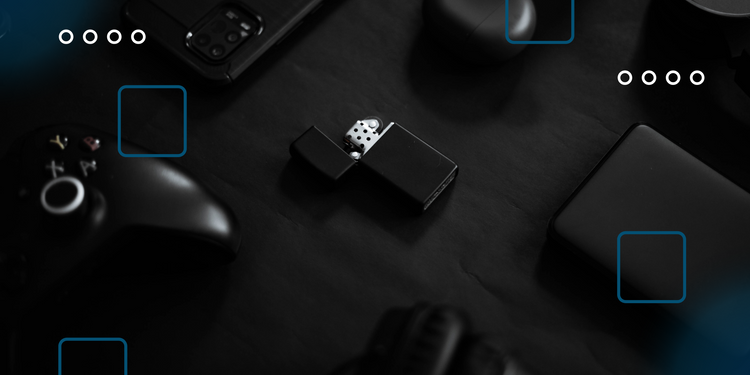A Complete Guide to Replacing the Screen on a Samsung Galaxy A53
Cracked or unresponsive screens can be frustrating, but replacing the screen on a Samsung Galaxy A53 is simpler than you might think. With the right tools, a little patience, and this step-by-step guide, you can save money by fixing it yourself!
What You’ll Need
- Tools: Phillips screwdriver, plastic pry cards, metal pry tool, tweezers
- Adhesive remover: Isopropyl alcohol (90% or higher)
- Replacement parts: New screen and adhesive (foam tape or B7000 glue)
- Optional: Magic self-heating pads, magnetizer for your screwdriver
Step 1: Preparing to Remove the Back Cover
- Turn off the phone to prevent accidental damage.
- Place two Magic self-heating pads on the back of the phone and heat them for about 10 minutes to soften the adhesive.
- Use a thin blade to create a small gap in the back cover. Insert a plastic pry card into the gap, and carefully slide it around the edges to loosen the adhesive. Once the adhesive is fully separated, gently lift the back cover.
Pro Tip: While this process may seem daunting, it’s quite manageable with patience and the right tools.

Step 2: Removing the Internal Components
With the back cover off, here’s what to do next:
- Unscrew and remove shields: Use a Phillips screwdriver to remove all screws securing the internal shields. If the screwdriver isn’t magnetized, use a magnetizer to help lift the screws more easily.
- Disconnect the battery: Gently lift the motherboard shield using tweezers, and use a plastic pry tool to disconnect the battery connector.
- Remove the main flex cable: Disconnect the main cable connecting the motherboard and the battery. Removing it ensures it won’t get damaged during the process.
- Remove the battery: Drip a few drops of isopropyl alcohol along the edges of the battery to loosen the adhesive. Use a pry tool to carefully lift the battery, working gradually around the edges. Avoid puncturing or bending the battery.
Step 3: Disassembling Additional Components
Next, remove these parts:
- Charging board
- Motherboard
- SIM tray: Don’t forget to take this out before removing the frame components to avoid damage.
With all the parts disassembled, you’re ready to work on the new screen.

Step 4: Preparing and Installing the New Screen
Unbox the replacement screen and inspect it. You’ll notice it’s completely bare, meaning you’ll need to transfer all components from the old screen to the new one.
- Carefully reinstall each component, ensuring all connectors are aligned and securely attached.
- Make sure all screws are tightened appropriately and that cables are not pinched or twisted.
Step 5: Testing the New Screen
Before sealing the back cover, power on the phone and run a diagnostic test:
- Open the dialer and enter *#0*# to access the built-in testing tool.
- Check the display for:
- Color accuracy: Test for discoloration or color distortion.
- Dead pixels: Inspect the screen for any unresponsive areas.
- On the Touch test page, tap every grid on the screen to ensure touch responsiveness is consistent across the entire display.
Tip: Perform all tests before sealing the phone to avoid reopening it later.
Step 6: Reassembling the Phone
Once you’ve confirmed the screen is working perfectly:
- Reinstall all internal components in reverse order, ensuring all screws and connections are secure.
- Reattach the back cover using adhesive foam tape or B7000 glue. Foam tape is faster, but B7000 glue creates a tighter seal (though it requires curing time).
Why Don’t Phones Have Removable Screens or Batteries?
You might wonder why modern phones don’t have easily swappable screens or batteries. The answer lies in design and technology:
- Durability: Sealed designs help phones resist water and dust.
- Slimmer builds: Non-removable components allow for thinner and lighter devices.
- Longer-lasting batteries: Modern batteries and screens are designed to last for years, reducing the need for frequent replacements.
Final Thoughts
Replacing the screen on a Samsung Galaxy A53 might seem intimidating at first, but with this guide, it’s completely achievable. Not only does DIY repair save you money, but it also extends the life of your phone, reducing e-waste.
Have you tried replacing your phone screen before? Share your experience in the comments below!
For more tech repair tips and tutorials, don’t forget to check out our YouTube channel for detailed step-by-step videos!
Spare Parts:
[Samsung Service Pack] Samsung Galaxy A53 5G (SM-A536) LCD Touch Digitizer Screen Assembly:https://www.polartech.com.au/products/samsung-service-pack-samsung-galaxy-a53-5g-sm-a536-lcd-touch-digitizer-screen-assembly
[EB-BA336ABY] Samsung Galaxy A33 5G (A336) / A53 5G (A536) Replacement Battery:https://www.polartech.com.au/products/eb-ba336aby-samsung-galaxy-a33-5g-a336-a53-5g-a536-replacement-battery
[With Camera Lens] Samsung Galaxy A53 5G (SM-A536E) Back Rear Battery Cover:https://www.polartech.com.au/products/with-camera-lens-samsung-galaxy-a53-5g-sm-a536e-back-rear-battery-cover
Samsung Galaxy A53 5G (SM-A536) Charging Port Charger Connector & Sim Reader Sub Board:https://www.polartech.com.au/products/samsung-galaxy-a53-5g-sm-a536-charging-port-charger-connector-sim-reader-sub-board-1
Samsung Galaxy A53 5G (A536B) / A73 5G (A736B) Back Rear Main Camera Module Flex:https://www.polartech.com.au/products/samsung-galaxy-a53-5g-a536b-a73-5g-a736b-back-rear-main-camera-module-flex
Samsung Galaxy A53 5G (SM-A536) Main Motherboard Connector Flex:https://www.polartech.com.au/products/samsung-galaxy-a53-5g-sm-a536-main-motherboard-connector-flex


